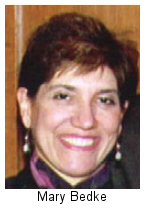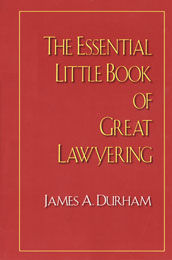When you're a marketer, you've got to go where the clients are. Regrettably this means traveling on the country's uncaring, incompetent and overbooked airlines, and staying in overpriced, undercleaned and uncomfortable hotels. A one-night stay in the financial district of Manhattan costs $400-$600, so you want to spend your money wisely.
Happily I just got the July 2007 issue of Consumer Reports magazine, which surveyed 35,000 readers about 52,000 hotel stays and 31,455 domestic flight experiences. The magazine makes short work of finding the best airlines and hotels:
Best "fancy" hotels: Ritz-Carlton and Fairmont. (Note that Four Seasons didn't make the list).
Best business ("luxury") hotels, in order: Renaissance, Embassy Suites, Westin, Marriott, Omni, DoubleTree and Hilton.
If you're like me, I avoid the expensive hotel when I'm going to a conference and stay at a really nice, inexpensive hotel around the corner. Consumer reports calls these hotels "upscale": Homewood Suites, SpringHill Suites by Marriott, Harrah's Residence Inn by Marriott, Hilton Garden Inn, Hawthorn Suites, Courtyard by Marriott and Crowne Plaza.
The top airlines were on a short list:
- JetBlue Airways - serving 54 cities. (the researchers conducted a follow-up survey in April, soon after the highly publicized, weather-related blunders of JetBlue in February, which left passengers stranded and fuming. It turns out that JetBlue's winter troubles had little effect on the airline's overall levels of satisfaction.)
- Midwest airlines -- serving 50 cities. They bake chocolate chip cookies for passengers in flight. Midwest has solid service but not necessarily a low fare.
- Southwest Airlines -- serving 63 cities. You have to search the airline's own website at www.southwest.com to find the fares, because they don't share them with Expedia, Orbitz or other travel sites.
- Frontier Airlines -- serving 60 cities. I personally flew on Frontier from Chicago to Denver in June and recommend the airline.
Below that, the best airlines were very small, such as Hawaiian, Aloha and Alaska Airlines. Down at the bottom were Delta, American, Northwest ("Northworst"), United and US Airways -- all of which I've had terrible experiences with.
I was recently on a United Flight that had so little legroom, my knees were jammed into the seat in front of me during two arduous flights from Chicago to New York. The flights were both delayed, each way, with no good explanation given.
American was even worse. I was flying on Aadvantage miles from Chicago to Dallas, which I booked via American "reservations." When I wanted to change to an earlier flight out of Dallas, they told me I had to call "customer service," which was closed after 5 PM. I called "customer service" the next day at 7 AM and they told me I couldn't make the change because my trip was already underway. So I went to the Dallas-Fort Worth airport -- their hub -- and my scheduled flight was delayed for 5 hours, in 20-minute increments. When the plane finally took off, the interior was falling apart, notably the tray table that was attached by only one hinge. They lost my luggage and I had to wait in another long line to arrange for delivery of my suitcase. I got home very late at night without so much as a toothbrush.
United and American have become terrible airlines. Look for me on a JetBlue, Midwest, Southwest or Frontier flight.
 Barnes & Thornburg has cooked up a new way to win new business from clients: it published a 318-page cookbook composed of recipes from their cuisine loving lawyers. Entitled "Great Tastes of Law," the book sells for $16 and all the proceeds go to charity. Mmmmm good.
Barnes & Thornburg has cooked up a new way to win new business from clients: it published a 318-page cookbook composed of recipes from their cuisine loving lawyers. Entitled "Great Tastes of Law," the book sells for $16 and all the proceeds go to charity. Mmmmm good. A study to be published in the Journal of Marketing that covered 167 companies including Procter & Gamble, Microsoft and Apple over a five-year period concludes that CMOs on top management teams don't have any effect on a company's financial performance, according to a recent issue of
A study to be published in the Journal of Marketing that covered 167 companies including Procter & Gamble, Microsoft and Apple over a five-year period concludes that CMOs on top management teams don't have any effect on a company's financial performance, according to a recent issue of  The ABA Journal, which is read by more than half the nation’s 1.1 million lawyers every month, has radically revamped its website. "It aggregates and filters breaking news from the nation’s best legal journalists and daily analysis from lawyers who are experts in their fields. It’s a place where the legal community can comment about today’s developments, and learn from each other," said
The ABA Journal, which is read by more than half the nation’s 1.1 million lawyers every month, has radically revamped its website. "It aggregates and filters breaking news from the nation’s best legal journalists and daily analysis from lawyers who are experts in their fields. It’s a place where the legal community can comment about today’s developments, and learn from each other," said  CMO Jim Durham says he has the figures to prove that clients are more loyal to his law firm, 900-lawyer Ropes & Gray, than to the average professional services firm.
CMO Jim Durham says he has the figures to prove that clients are more loyal to his law firm, 900-lawyer Ropes & Gray, than to the average professional services firm. .gif) Let's say you've walked out of a bar and had a few too many. To make it bad, let's say you decide to drive home. To make it worse, let's say the police lights and siren go off behind you, and you're pulled over.
Let's say you've walked out of a bar and had a few too many. To make it bad, let's say you decide to drive home. To make it worse, let's say the police lights and siren go off behind you, and you're pulled over. Blogger
Blogger  I got a letter from my trademark lawyer,
I got a letter from my trademark lawyer, 

 From a variety of news sources:
From a variety of news sources:


